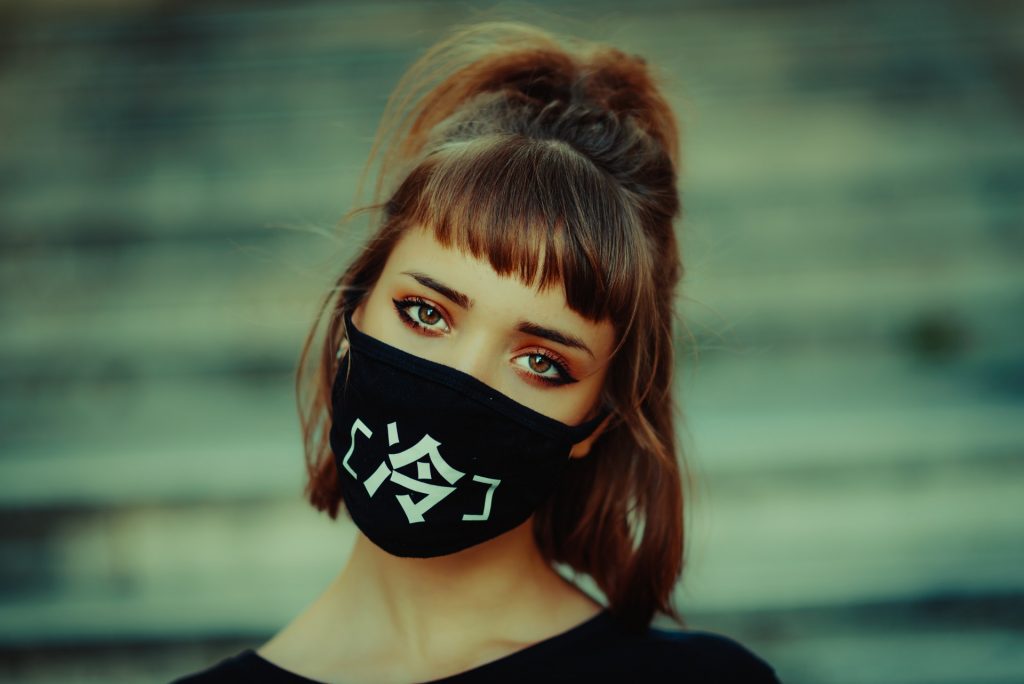Skin Issues from Protective Masks

Skin reactions
Now that many people need to wear protective masks (homemade or otherwise) for hours and hours every day, we’re finding more and more adverse skin reactions to these masks.
The issues from the masks come from a few root causes: friction, heat, and moisture. If you’ve ever received a service from me, you’ve heard me tell you that you want to avoid these three things on acne-prone and freshly waxed skin.
On healthy skin, these factors don’t strike quite as dramatically as quickly, but they do add up and can lead to problems!

Friction
Friction is not good for healthy skin. Friction can lead to acne and irritation in plenty of forms. An overarching term for irritation from friction is contact dermatitis. Symptoms can include red, itchy, weepy, and/or scaly skin.
Heat and Moisture
A consequence of trapping your breath by wearing a mask is trapped heat and moisture. When you think of heat and moisture, you probably link that to ideal living and breeding circumstances for bacteria. You’d be absolutely right. Heat and moisture also soften skin – and eventually that softened skin becomes weak and vulnerable.
Pair this fragility and bacteria-thriving environment with removing the mask and replacing it often can lead to dried out, dehydrated skin.
Remedying the symptoms
What does this mean? Irritated skin and breakouts. Battling these symptoms requires a personalized approach from listening to your skin’s needs.
For example, if you’re having a lot of irritation, you need to focus on repairing your skin barrier and providing hydration and nourishment. On the flip side, if you’re getting breakouts but your skin isn’t feeling raw, you want to either incorporate or continue using targeted active ingredients to fight those breakouts.
Approach One: Healing Irritation
If you’re suffering from eczema or contact dermatitis, you want to minimize and prevent further irritation.
First, I recommend using a gentle routine without any actives. This means that you cease using any hydroxy acids, retinols, and enzymes. Stick to a soothing routine of gentle cleanser, toner (if you use one), moisturizer, and sunscreen. If you need additional hydration, a hydrator can be applied under your moisturizer.
Initial relief from contact dermatitis can be found by applying a hydrocortisone cream before putting on your mask in the morning, and after removing your mask and cleansing your skin in the evening. Once the hydrocortisone cream is dry, apply a gentle moisturizer to prevent dehydration and dryness.
To prevent further irritation, apply a thin layer of Vaseline, Aquaphor, or another balm or salve immediately before putting on your mask. Please note that this is not an ideal option for those using n-95 masks or other masks that require a seal to the skin.
Approach Two: Combating Breakouts
If you aren’t experiencing irritation, but are experiencing breakouts, then you need to either continue using or incorporate active ingredients in your routine.
Acne is formed by a combination of dead skin cell and sebum buildup and bacteria. The friction, heat, and moisturizer from wearing a protective mask are all triggers for acne.
To combat the buildup we need to use hydroxy acids like salicylic, mandelic, or glycolic. I recommend using these in a serum form, after cleansing the skin with a gentle cleanser.
To combat the bacteria, we need an antibacterial agent like benzoyl peroxide (BPO). This is best used in a small percentage (I’m talking 2.5%) to minimize drying. It is ideal to use BPO at night as the last step of your routine, as adding a moisturizer on top of BPO will make it ineffective.
You can also use pimple patches on individual spots to give protective and targeted actives to that particular breakout.
If you’re introducing actives into your routine, start small and start slow. Diving in head first can lead to additional dryness and irritation, which is not beneficial to helping your skin heal!

Tips for everyone:
Whether you are fighting irritation or acne, here are some helpful tips for all mask-wearers!
- Skip wearing makeup on skin that the mask covers. No one will see it, and it is just adding another layer of complexity that could potentially lead to irritation and breakouts.
- Machine wash or hand wash cloth masks daily
- If you cannot wash your mask daily, spray it with 70% isopropyl alcohol (only for cloth masks)
If you have additional questions, don’t hesitate to contact me! If you’d like to begin your acne-free journey, start here.
